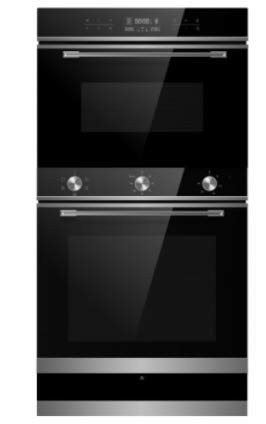7 Little Changes That Will Make The Difference With Your Oven And Hob
The Complete Guide to Ovens and Hobs: Choosing the Right Appliances for Your Kitchen
When it comes to developing culinary work of arts, the importance of quality kitchen appliances can not be overstated. Ovens and hobs are the heart of any kitchen, allowing home cooks and expert chefs alike to produce, bake, and sauté tasty meals. Understanding the various kinds of ovens and hobs, in addition to their features and performances, is essential for making informed getting decisions. This short article offers a thorough take a look at ovens and hobs, helping you browse the choices offered so that you can improve your kitchen's efficiency and flexibility.
Understanding Ovens
Ovens are important for cooking and baking and come in various types to meet diverse culinary requirements. Here is a summary of the most typical types of ovens:
1. Traditional Ovens
Conventional ovens work by heating the air inside with gas or electric components. They are ideal for baking cakes, roasting meats, and cooking casseroles.
2. Convection Ovens
These ovens utilize a fan to distribute hot air, supplying an even temperature level throughout, which can considerably decrease cooking times. They are ideal for baking cookies or roasting veggies.
3. Microwave Ovens
Microwaves cook food rapidly using electromagnetic radiation. They are ideal for reheating leftovers or thawing frozen foods however are not suitable for browning or crisping.
4. Wall Ovens
Incorporating a wall oven into your kitchen design can save space and create a streamlined aesthetic. ovensandhobs.uk work just like conventional or stoves but are built into the wall for simple access.
5. Range Ovens
These ovens combine stovetop burners with an oven, providing adaptability for those who choose a single home appliance for all cooking requirements.
Type
Cooking Method
Best For
Standard
Electric/Gas
Baking, roasting
Convection
Air blood circulation
Quick cooking, even baking
Microwave
Electro-magnetic
Reheating, thawing
Wall Ovens
Electric/Gas
Space-saving, streamlined style
Variety Ovens
Electric/Gas
Versatile cooking
Checking out Hobs
Hobs, also referred to as cooktops or stovetops, offer the surface area to prepare pans directly over a heat source. Like ovens, hobs are available in various types, which can be classified as follows:
1. Gas Hobs
These hobs utilize a flame for cooking and supply immediate heat control. They are preferred by lots of chefs for their responsiveness and accuracy.
2. Electric Hobs
Electric hobs use coils or flat surfaces to heat pans. They offer a constant heat source, but they might take longer to cool off compared to gas hobs.
3. Induction Hobs
Induction hobs utilize electromagnetic energy to heat pots and pans straight, making them extremely efficient and much faster to prepare. They are also much easier to clean up as the surface area remains relatively cool.
4. Solid Plate Hobs
These are older innovation that uses strong metal plates to provide heat. They are long lasting but are less efficient than contemporary options.
Type
Heat Source
Advantages
Downsides
Gas Hobs
Flame
Instant heat control
Requires gas connection
Electric Hobs
Electric coils
Constant heat
Slower to cool down
Induction Hobs
Electro-magnetic
Quick cooking, energy-efficient
Needs suitable pots and pans
Strong Plate Hobs
Solid metal plate
Resilience
Less effective
Choosing the Right Appliances
Choosing the perfect oven and hob for your kitchen involves considering various aspects:
1. Area and Layout
Measure your kitchen location to identify the size and positioning of the oven and hob. Ensure there is appropriate ventilation, particularly for gas home appliances.
2. Cooking Style
Think about how often you cook and the kind of meals you prepare. A stove may fit passionate bakers, while someone who frequently stir-fries might choose an induction hob.
3. Energy Source
Pick the energy source that best fits your lifestyle. Gas provides instant control, while electric and induction hobs offer ease of use and are frequently more energy-efficient.
4. Budget
Determine your budget for kitchen home appliances. Ovens and hobs vary considerably in cost, depending upon functions and brands. Focus on important functions that fulfill your requirements.
5. Features
Look for functionalities such as self-cleaning alternatives, smart technology compatibility, particular rack setups for ovens, and security features for hobs.
Frequently Asked Questions (FAQs)
Q1: What is the distinction between a traditional oven and a convection oven?A1: Conventional ovens heat the air within without fans, while stove use a fan to circulate hot air for more even cooking. Q2: Can I utilize aluminum pots and pans on induction hobs?A2: No, induction hobs need ferrous (magnetic )products like cast iron or stainless steel to work efficiently. Q3: Do gas hobs heat quicker than electric hobs?A3: Yes, gas hobs offer immediate heat, making them faster for cooking compared to electric hobs. Q4: Is it safe to use a microwave oven?A4: Yes, when used according to the manufacturer's guidelines, microwave are thought about safe for food preparation.
Q5: How typically should I clean my oven and hob?A5: For optimal performance, tidy your oven routinely, specifically after spills. Hobs should be cleaned down after each use
to prevent accumulation. Ovens and hobs
are vital parts of a fully equipped kitchen. Understanding the various types, their performances, and the factors to consider included in purchasing
them can dramatically boost cooking experiences. Whether one is a casual home cook or an expert chef, investing time in choosing the best devices can lead to cooking success and complete satisfaction in the kitchen. By prioritizing features that line up with your cooking design, energy sources that fit your home, and budget plan considerations, you can produce an efficient workspace that influences cooking creativity. 